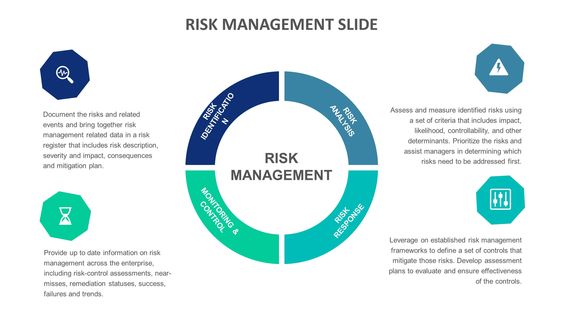Introduction
Risk management is an essential part of any business’s operations. It involves assessing, managing, and controlling risks that could potentially harm the organization. A risk management strategy outlines the steps that an organization takes to identify, assess, and mitigate risks. It is important for businesses to create an effective risk management strategy in order to protect their assets, people, and operations.
Identify Risks
The first step in creating a risk management strategy is to identify potential risks. This can be done by conducting a risk assessment, which involves analyzing the organization’s operations and identifying potential threats. It is important to consider both internal and external risks, such as natural disasters, cyber-attacks, and financial losses. Once potential risks have been identified, the organization can create a plan to mitigate them.
Assess Risks
Once the risks have been identified, the organization should assess the severity of each risk. This can be done by determining the probability and impact of each risk. The probability of a risk is the likelihood that it will occur, while the impact is the potential harm that the risk could cause. The organization should also consider the cost of mitigating the risk and the potential benefits of doing so.
Develop a Risk Management Plan
Once the risks have been identified and assessed, the organization should develop a risk management plan. This plan should include strategies to mitigate the risks, such as implementing security measures, creating backup plans, and establishing policies and procedures. The plan should also include contingency plans in case the risk does occur.
Implement the Plan
Once the risk management plan has been created, the organization should implement it. This involves taking the necessary steps to reduce the risk, such as implementing security measures, creating backup plans, and establishing policies and procedures. It is important to ensure that all employees are aware of the plan and understand their roles in mitigating the risk.
Monitor and Evaluate
Once the risk management plan has been implemented, the organization should monitor and evaluate its effectiveness. This can be done by tracking the progress of the plan and assessing the results. If the plan is not working as expected, the organization should adjust it accordingly.
Communicate the Plan
It is important for the organization to communicate the risk management plan to all employees. This will ensure that everyone is aware of the plan and understands their role in mitigating the risk. It is also important to provide regular updates on the progress of the plan and any changes that have been made.
You might find these FREE courses useful
- Implementing a Risk Management Framework
- Program Risk Management in ClickUp
- Introduction to Risk Management
- A General Approach to Risk Management
- Risk Management Specialization
Review and Update
Finally, the organization should review and update the risk management plan on a regular basis. This will ensure that the plan is up-to-date and effective in mitigating risks. It is important to review the plan periodically to ensure that it is still relevant and effective.
Risk management is an essential part of any business’s operations. A risk management strategy outlines the steps that an organization takes to identify, assess, and mitigate risks. By following the steps outlined above, organizations can create an effective risk management plan that will help protect their assets, people, and operations.


